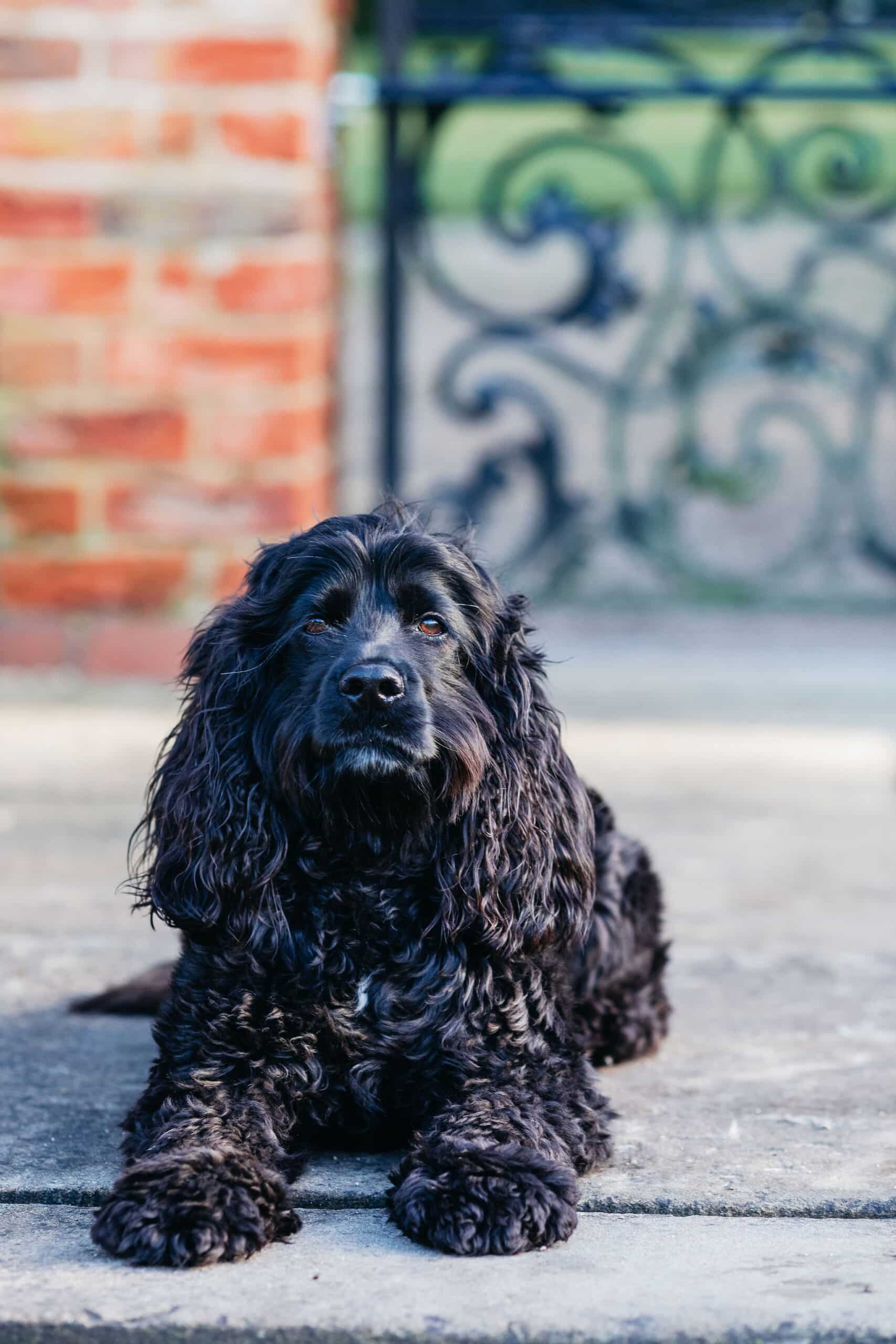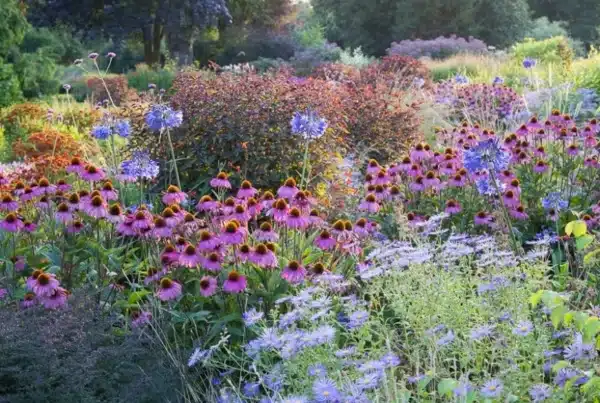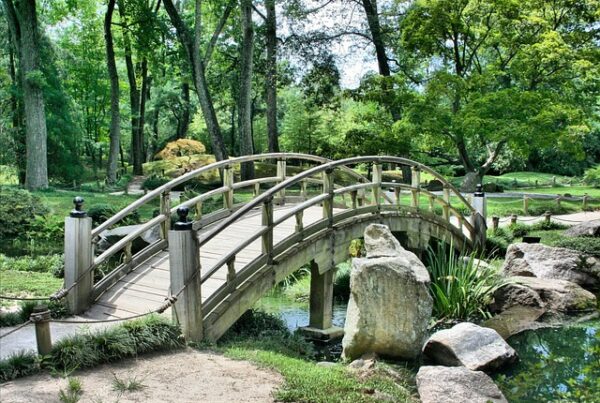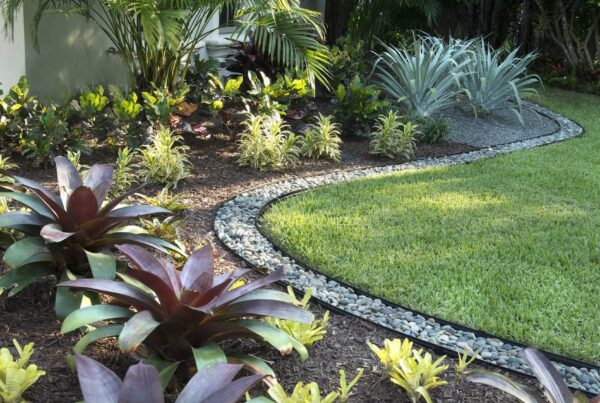Do you have a four-legged friend or two? Maybe even more? We do too – most of our company do, in fact! The pictures you’ll see on this blog are some of our favourite snaps of the Outdoor Living Gardens dogs. As dog-lovers and a garden company, it’s super important to us that our outdoor spaces are safe, secure, and fun for our pets, and if you’re thinking about redesigning your garden while you have a dog, you’ll want to consider it too. So today, we’d like to share some of our suggestions for a beautiful outdoor space that can be enjoyed to its fullest by both you and your four-legged friends!
Secure the Area
It is important to make sure that the area of your garden is enclosed and safe for your dog to be in freely. This means making sure your fence is sturdy, tall enough to stop jumping, low enough to stop crawling under, and finding ways to make sure any entrances are barred. If your garden connects directly to your driveway, for example, a fence with a gate at the end is an excellent way to separate those two spaces without limiting your own access. Hedges and raised beds around the edges of a garden are some other effective ways to discourage potential escapees.
You should also consider anything that might be loose or freestanding and decide if securing them is necessary. If it can be knocked over by a moderately-strong wind, it can probably be knocked over by a dog, and usually, that’s not ideal. A falling object could land on or injure a dog, or if it’s something like a compost bin, may spill its contents and leave them open for a dog to eat – which we don’t want!
Dog-friendly Plants and Materials
We all know that there’s a lot of different plants that are toxic to dogs, but do you know if any of them are in your garden? Checking that everything you have planted will be okay if your pet decides to have a little nibble is important. There are plenty of beautiful plants that are completely non-toxic to dogs, so spending that extra time to research and keep your pup safe shouldn’t have any impact on the eventual look of the garden. You may also want to consider hardier plants who can take a bit of a beating… just in case your dog likes to dig.
On top of plants, the rest of the materials that go into the garden need to be considered and checked for dog-friendliness. There are some types of soil and mulch sold in garden stores that are made of or contain waste products from cocoa beans, as in, the thing in chocolate that dogs really, really shouldn’t have. It should be a given that a dog’s dream garden would avoid using these. Any chemicals that go into a garden need to be chosen very carefully too, and when possible, avoided entirely. Dogs explore with their nose, meaning anything that goes onto your garden, they will certainly inhale some of. Be careful when using herbicides or pesticides, using organic ones instead of very chemical ones.
Speaking of pests, you should be extra careful of slugs and snails. While your dog may see something small and easily edible, there is a possibility of them being toxic to your pets, or of passing on a worm infection. Discouraging these pests with organic slug bait, clever garden design and plant choice is important. There’s some nice overlap in the types of plants that are good for dogs and the types of plants that are bad for snails, such as lavender and basil.
Outdoor Bathroom
If you have a dog, one of the most likely reasons for your garden is so your pet has somewhere to go to relieve themselves. Dog pee can, over time, stain grass yellow, so if that’s something you’re looking to avoid, there are some things you can do. You can create a smaller patch of grass away from the focus point of the garden and train your dog to pee there, so any yellowing is less noticeable and less important. Alternatively, you could train your dog to go on a hard ground area like on a patio, which tends to make for an easier time cleaning up poo.
You may think that artificial grass is the way to go to avoid yellowing, but you may want to think twice about that. During summer, the material of artificial grass can hold onto heat, and make it too hot for your pet, burning their paw pads if they step on it. It also has a nasty habit of holding onto the smell of dog pee.
Fun
Safety is all well and good, but ensuring your garden is fun for your dog is important too. It’s quite easy to appease a dog in this regard. Set up your garden with a play area, a space for them to run and roll around. A path through your garden is also a wonderful opportunity to give your dog an area to run and patrol. If your dog is a particularly active or intelligent one, you could consider dog training and exercise equipment like tunnels or ramps, and a choice of outdoor toys like frisbees and balls will go down a treat with most any dog.
When your dog has had enough of playing, though, it’s also important to give them somewhere safe to relax, out of the sun. Dogs cannot sweat to get rid of excess heat like humans can, they can only pant, so giving them somewhere shady and cool is especially important. A shelter like a gazebo works wonders for this, but you can also create shade with plants using trees and pergolas.
Choosing a dog-confident company
If you’re redoing your garden, there’s a decent chance you’re not doing it alone, but rather, employing the help of a gardening and landscaping company. If you are, it is going to be worth your time to investigate your options and find out if a company is confident in their ability to create a dog-safe environment in a garden. Outdoor Living Gardens pride ourselves on our confidence in this regard. We love our furry friends, and we know that you love yours too, and we want to help you design a perfect garden for yourself and your pet. Also, it means we get to meet more dogs. Honestly, it’s just a win-win situation
If you’re interested in our services and what we can do for you, please don’t hesitate to contact us. We can be reached by phone at 01756 541313 or by email at hello@outdoorlivinggardens.co.uk




